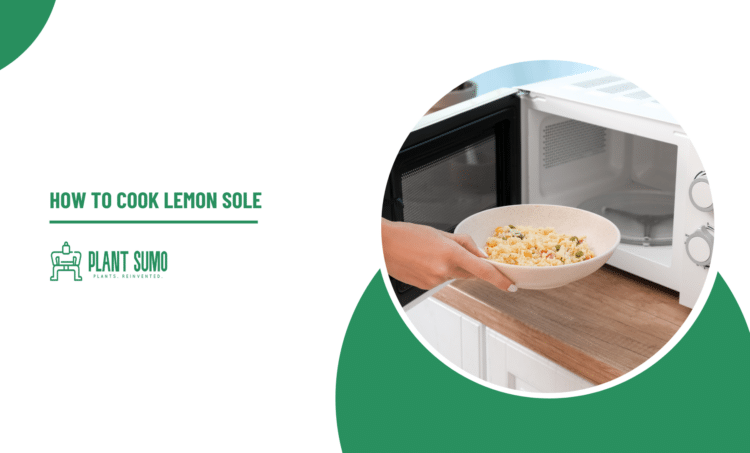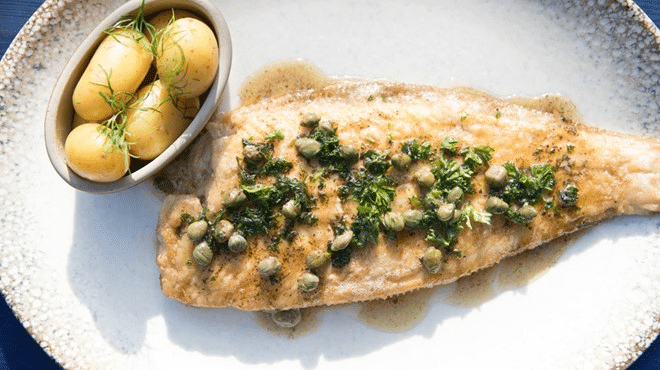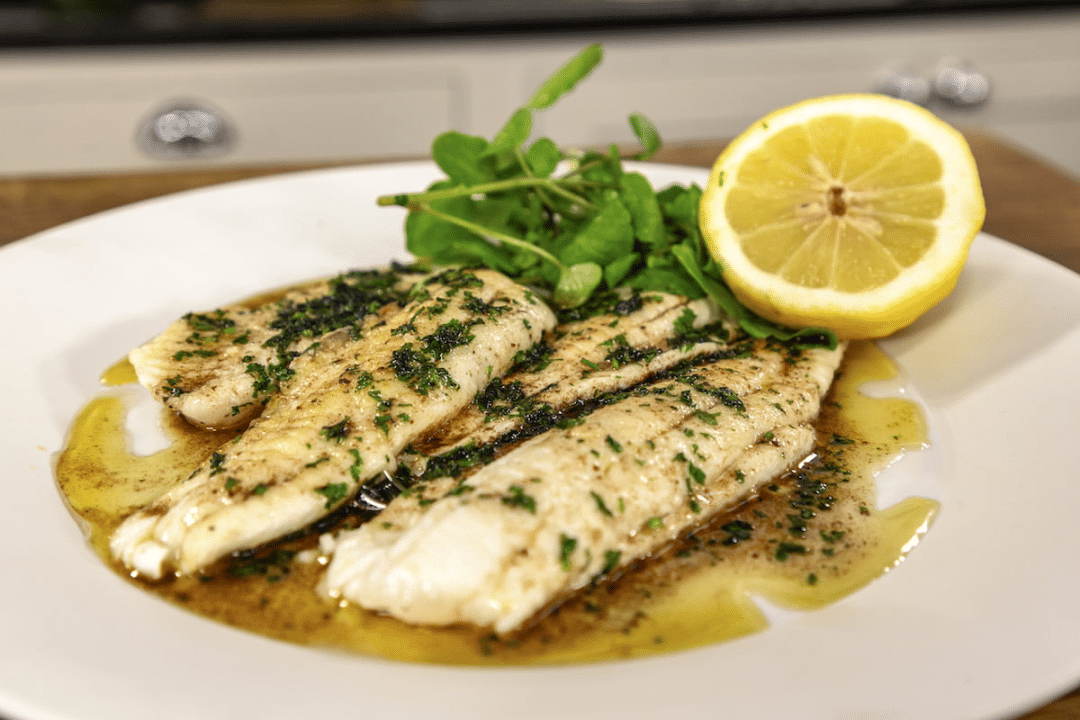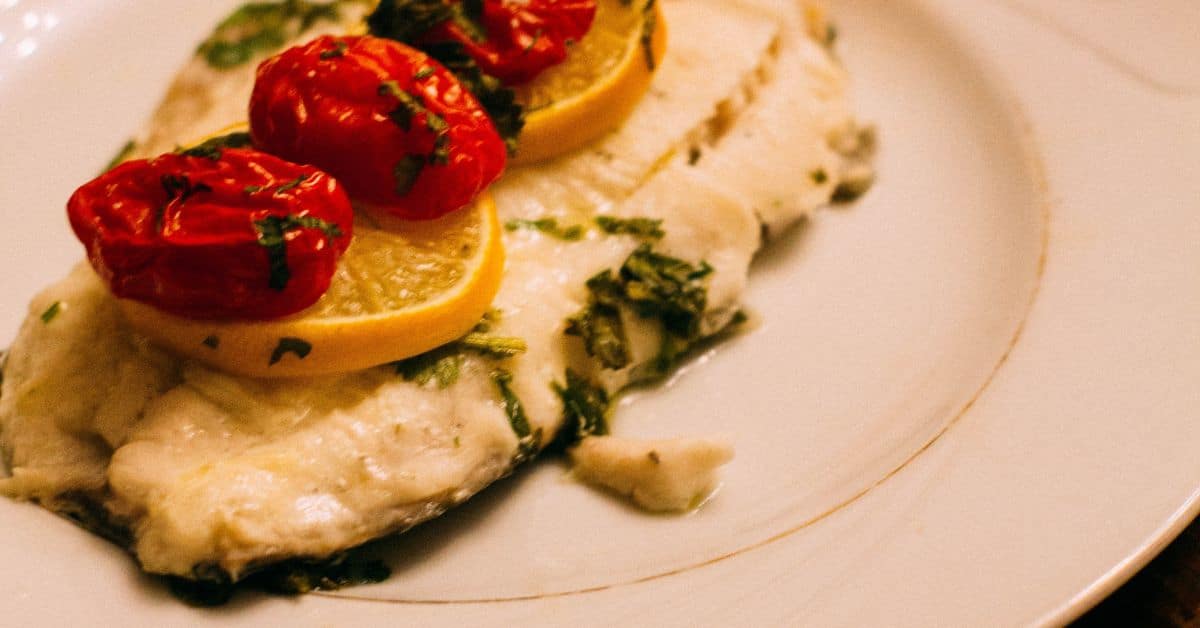No products in the cart.
How to Cook Lemon Sole

The lemon sole (Microstomus kitt) is a flatfish in the Pleuronectidae family. It is indigenous to shallow seas in Northern Europe, where it lives on stony bottoms at depths of up to 200 meters (660 ft). It can grow to be 65 centimeters (26 in) long and weigh around 3 kilograms (6.6 lb).
The lemon sole is a small, right-eyed flatfish with smooth, slimy skin and a small head and mouth. The upper surface is reddish-brown in color, mottled with pink and orange and flecks of yellow and green, and there is a prominent orange patch behind the pectoral fin, around which the lateral line also curves. The fish’s underside is white. Adults can grow to be up to 65 centimeters (26 in) long, but most are only 20–30 centimeters (8–12 in) long.
In this article, we will walk you through the process of cooking Lemon Sole step by step. By following the tips, you will be able to cook your Lemon Sole easily.
So without wasting time let’s begin.

The name’s origin
The fish is not a true sole, and it does not have a lemon flavor. The English name is most likely derived from the French name limande or sole limande. The French term limande may derive from the word lime, which means “file” (a tool used to smooth metal, wood, etc.), and may refer to the texture of the fish’s skin. Some authors believe that “limande” is derived from the French word Limon (which means “silt”)
Fishing
The European Union fishing quota for the lemon sole (and witch) in 2007 was 6,175 tonnes, of which 3,716 tonnes were caught, mostly by UK fishermen. The 2008 quota was 6,793 tonnes, and the 2009 quota was also 6,793 tonnes.
Lemon sole is rated 3 or 4 on the Marine Conservation Society’s sustainability scale (where 1 is best and 5 is worst) depending on how and where it is caught.
Ingredients
- 4 oz. skinless sole or flounder fillets
- freshly ground black pepper and kosher salt
- For dredging, use flour.
- 5 tbsp cold unsalted butter, cut into tablespoon-sized chunks
- 2 tbsp lemon juice, freshly squeezed
- 2 tablespoons water
- 1 teaspoon flat-leaf parsley leaves, minced
- 1 teaspoon fresh thyme leaves, minced
How to Cook Lemon Sole
Now let’s get down with our main event and learn about how to cook Lemon Sole, And try follow our instructions and advice step by step-
Step 1: Preheat 2 medium nonstick skillets for 5 minutes on medium-low heat.

Step 2: Meanwhile, place the fillets on wax paper, parchment paper, or a baking sheet and pat dry with paper towels. Season both sides of the fillets with salt and pepper. (If the fillets have a very thin tail, fold it back to make a more uniformly thick fillet.) On a plate, spread out the flour. Dredge the rounded sides of the fillets in flour, shaking off any excess.
Step 3; Increase the heat to medium-high in each skillet and add 1 tablespoon of butter. When the butter has stopped foaming, add 2 fillets to each pan, rounded side down, and cook for 2 minutes, lightly shaking the skillets occasionally, until golden brown. Turn off the heat, flip the fillets with a spatula, and cook for another 2 minutes in the residual heat in the pans. Cover the fillets loosely with foil and place them on 4 warm plates.
Step 4: In one of the skillets, combine the lemon juice and water. While moving the skillet in a circular motion, gradually add the remaining 3 tablespoons of butter until melted and a smooth, creamy sauce forms. Season with salt and pepper to taste after adding the parsley and thyme. Serve immediately with some of the sauce spooned over each fillet.

FAQ
Question: Do you need to skin lemon sole?
Answer: Cook at a high temperature and keep the skin intact to limit any risk of overcooking. Cooking whole lemon sole couldn’t be easier. Simply trim the fins off, rub in some oil, season and you’re all set.
Question: What’s the distinction between sole and lemon sole?
Lemon sole are right-eyed flatfish with an oval body and a small head and mouth. They are typically a mottled red-brown, pink, and orange color with yellow and green flecks. Behind the pectoral fin, there is a large orange blotch.
Question: Is there any bone in the lemon sole?
Answer; Lemon Sole is a flatfish with a firm texture that is native to Northern Europe. Try using the small bones of the Lemon Sole while cooking for extra flavor with little to no waste. Alternatively, the smaller bones can still be removed. Lemon Sole can be prepared and served in a variety of ways.
Question: How do you know if a lemon sole is bad?
Answer: Touch your raw fish to see if it’s slimy, which happens when fish starts to spoil, to tell if it’s gone bad. Your fish can also be smelled. It has gone bad if it has an increasingly fishy odor or begins to smell like rotten meat. You can also look at your fish.

Question: Is it safe to eat sole fish?
Answer; Sole fish, in particular, are high in selenium, vitamin B12, and phosphorus, as well as a variety of other vitamins and minerals. Furthermore, despite the fact that they are at a high risk of contamination with certain compounds, they are typically lower in mercury than many other types of fish.
Question: Is there any bone in the lemon sole?
Answer: Lemon Sole is a flatfish with a firm texture that is native to Northern Europe. Try using the small bones of the Lemon Sole while cooking for extra flavor with little to no waste. Alternatively, the smaller bones can still be removed. Lemon Sole can be prepared and served in a variety of ways.
Closing Words
These are the ways to cook Lemon Sole. Now it’s your time to follow all the maintenance, recommendation, and especially advice. But after that, if you have any questions about today’s article, you can leave your question in the comment section. We will try to give you an answer as soon as possible.
Good Luck!!


